
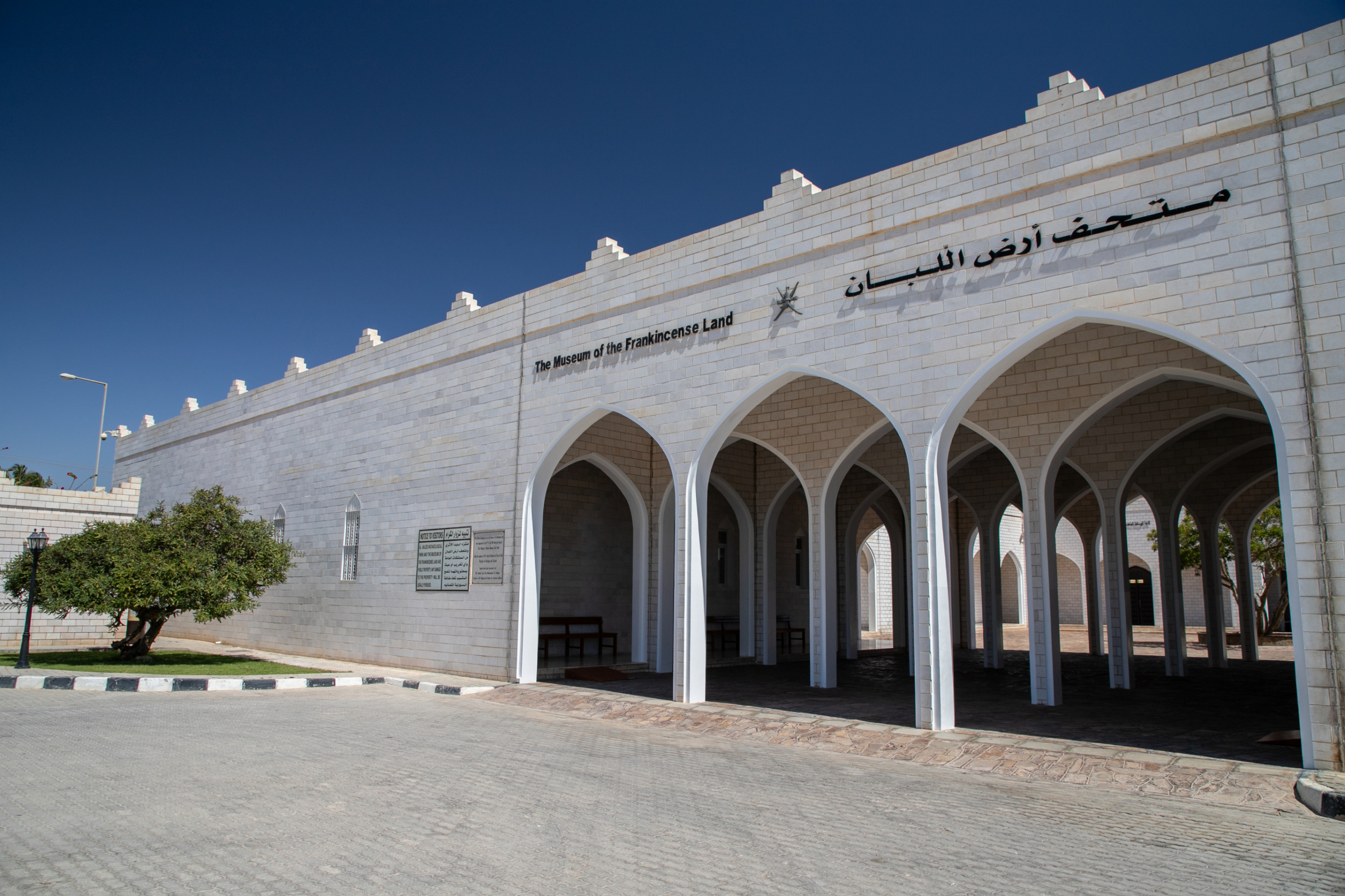
Museum of the Frankincense Land Salalah: Ancient Secrets Behind Oman’s Prized Heritage
The Museum of the Frankincense Land Salalah is the only museum in southern Oman. This cultural treasure sits within Al Baleed Archeological Park, a UNESCO World Heritage Site. The museum preserves the legacy of one of the world’s oldest trade commodities.
Oman’s frankincense trade has thrived for over 2,000 years and established some of the first international trade routes. Two main exhibition halls showcase this rich heritage. The Maritime Hall displays ancient Omani boats and navigation tools, while the History Hall houses precious artifacts from UNESCO-recognized sites like Al Baleed, Sumhuram, and Ash Shisr. We welcome you to explore this fascinating evidence of Oman’s prized heritage.
Inside the Museum of Frankincense Land
The Museum of the Frankincense Land welcomes visitors with two amazing exhibition spaces – the Maritime Hall and the History Hall. These spaces tell fascinating stories of Oman’s heritage through their displays and artifacts.
The Maritime Hall brings Oman’s seafaring legacy to life with beautifully crafted wooden models of traditional vessels. You’ll find detailed replicas of historic boats like Battil, Boom, Sambuq, and Ghanjah next to ancient navigation tools. The hall shows how Oman built strong maritime connections with India, China, East Africa, and Mediterranean regions.
The History Hall houses an impressive collection of archeological treasures across six distinct sections:
- The Land of Frankincense
- Ancient Oman
- Geography and Terrain
- Highlights from Omani History
- Contemporary Oman Renaissance
- The History of Islam in Oman
The hall’s prized collections include pottery and metalwork from UNESCO World Heritage sites like Al Baleed, Sumhuram, and Ash Shisr. You’ll also find remarkable architectural models of religious structures, including the tombs of Prophets Ayub, Hood, and Saleh. An 8th-century copy of Prophet Mohammed’s letter to Oman’s people stands out, complete with his original seal.
History comes alive through the museum’s interactive elements and multimedia presentations. Dedicated sections let visitors experience virtual maritime reality, while the video room’s documentaries explain the frankincense trade’s historical importance. On top of that, it features hands-on demonstrations of traditional frankincense harvesting, showing visitors the ancient techniques used to collect this precious resin.
The exhibits show how frankincense created a vital bridge between East and West, building trade networks from the Mediterranean to China. The museum’s displays and interactive elements take visitors on an unforgettable trip through centuries of Omani heritage and maritime excellence.
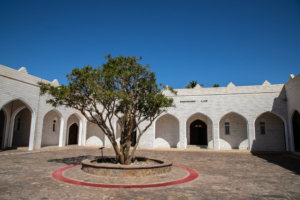
The Ancient Maritime Trade Hub
Ancient ruins along Salalah’s coast tell the story of Al Baleed, a medieval port city that revolutionized global maritime trade for centuries.
Port of Al Baleed
Al Baleed thrived as a vital trading hub on a promontory overlooking the Indian Ocean. Merchants from the ancient world flocked to this port. The port’s location made it a significant stop along the ‘Silk Road to the Sea’. Traders exchanged precious commodities from China, India, and beyond. Archeological evidence shows Al Baleed’s influence reached way beyond its fortified walls. The discovery of Ming dynasty artifacts confirms its strong connections with Chinese merchants.
The port had sophisticated infrastructure that was ahead of its time. Merchants used small boats to transport goods through shallow waters since it lacked a fortified harbor. Al Baleed’s wealth drew notable travelers during its golden age. Marco Polo, Ibn Battuta, and Chinese admiral Zheng He visited the port.
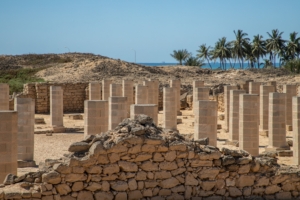
Trade routes and connections
The port built an intricate network of trade routes connecting three continents:
- East-West Route: Linking China and India through the Indian Ocean
- Northern Route: Extending to the Persian Gulf and Mediterranean
- Southern Route: Connecting to East African ports
Al Baleed served as the main export point for Dhofar’s most precious commodity – frankincense. Indian merchants brought cotton cloth, corn, and oil. They stayed through winter months to wait for favorable monsoon winds before returning home. The port reached its peak prosperity during medieval times. It handled an impressive variety of goods, from spices and precious stones to silk and fine textiles.
The port started declining in the 13th century after several attacks on the city. The final blow came in the late 15th century when Portuguese and European trading nations changed traditional trading patterns. Al Baleed’s archeological remains are proof of Oman’s maritime prowess today. The site earned UNESCO World Heritage status for its role in the frankincense trade.
The site has abundant ceramics and diverse archeological materials. These findings show that Al Baleed managed to keep strong relationships with inland communities while engaging in intensive Indian Ocean trade. The port created a unique melting pot where different traditions, social classes, and communities lived together. This mix shaped medieval Oman’s cultural landscape.
Frankincense: Oman’s Golden Legacy
“Tears of the gods” is what they call frankincense, a substance that has altered the map of Oman’s culture and economy for thousands of years.
Types of frankincense
Oman produces several distinct grades of frankincense, each valued for its unique properties. The premium Hojari grade from the Samhan mountains sells at 83 $/kg. Najdi, the second-finest grade from the Dhofar plateau, costs 67 $/kg. The darker Shathari grade from northwest Dhofar trades at 31 $/kg, while Shaabi from the valleys sells for 15 $/kg.
The Royal Green Hojari stands as the finest frankincense variety in Arabian culture, used mostly for medicine. This exceptional grade shows a unique light green color that you can find only in the Omani region.
Historical trade value
Frankincense matched gold in value during ancient times. This aromatic resin created vital trade routes between South Arabia, West Africa, and India for nearly 5,000 years. Roman Emperor Nero showed its significance when he burned an entire harvest at his wife’s funeral.
Oman now produces 80 to 100 tons of frankincense yearly from about 500,000 trees. Its value continues today through its use in perfumes, traditional medicine, and cultural ceremonies.
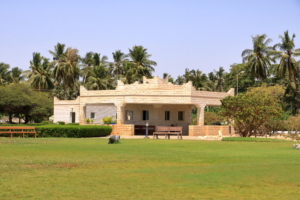
Traditional harvesting methods
The harvest starts each April when warmer temperatures help the sap flow. Workers cut precise marks in the bark so the milky sap can leak out and turn solid. They collect these hardened “tears” after ten days.
Trees follow a careful harvest cycle. They give sap for five years and rest for another five years to stay healthy. The best resin comes from autumn harvests, which yield the lightest and most valuable tears.
Dhofar’s climate creates perfect conditions to grow frankincense. Warm winters, steady sunlight, limestone soil, and cool monsoon winds work together to make Omani frankincense superior. This special environment and centuries-old harvesting methods keep Oman’s prized frankincense tradition alive.
Archeological Treasures Unearthed
Italian archeologists have found treasures buried deep in the sands of Al Baleed. These discoveries continue to enrich the Museum of the Frankincense Land Salalah’s collection year after year.
Notable discoveries
The excavations have revealed amazing artifacts that tell us about life in ancient times. The team found several earthenware items in their original dig:
- Intricate incense burners with detailed craftsmanship
- Oil lamps made from shells, showing creative use of materials
- Fishing tools that reveal a seafaring way of life
- Pottery and metalwork from different cultures
These artifacts now show us how Dhofar’s trade routes connected with civilizations throughout Asia and Africa. The team found items from places as far away as China and Rome at Al Baleed, which proves the port city’s worldwide connections.
New secrets keep emerging from this site. The team has only excavated less than 10% of Al Baleed’s ruins. Yet they’ve already uncovered a magnificent 60-foot-high citadel and a grand mosque with 144 columns.

Restoration process
The restoration at Al Baleed shows what can happen through teamwork between Omani authorities and international experts. Italian universities have shared their knowledge of conservation techniques and worked with local teams to protect these precious historical treasures.
You can watch and learn about the careful restoration process at the Museum of the Frankincense Land’s Archeology and History Workshop. Expert archeologists show visitors different parts of their work, including:
- Ways to date artifacts
- Methods to preserve ancient materials
- Steps to document historical findings
The workshop brings history alive by letting visitors handle replica artifacts while learning about ancient craft techniques. This hands-on experience helps people understand how advanced this civilization was thousands of years ago.
The restoration team works hard to keep the structures authentic while making sure they last for future generations. They carefully rebuild parts of the city walls and protect the original architectural features. This project shows how archeological tourism can balance preservation with visitor access.
Italian archeological missions started in the 1970s and helped develop better restoration techniques. Their work has helped several Omani sites earn UNESCO World Heritage status, which recognizes these archeological treasures’ worldwide importance.
Exploring the Museum Today
Your visit to the Museum of the Frankincense Land Salalah needs good timing and seasonal planning.

Guided tours
The museum’s guided experiences will give a fresh perspective on Oman’s frankincense heritage. You can tuck into both indoor galleries and the surrounding archeological park. Each tour includes detailed explanations about maritime exhibits and historical artifacts. You’ll also see interactive demonstrations of traditional frankincense harvesting techniques.
The guided experience stands out with its golf cart tour of the archeological site that shows ancient ruins and architectural remains. These tours run for 1-2 hours and give you a complete look at the museum’s collections and the region’s historical background.
Best times to visit
The best time to learn about the museum falls between October and February. Temperatures stay pleasant at 20°C to 30°C. You can enjoy both indoor exhibits and outdoor archeological sites without dealing with summer heat.
The museum runs on these hours:
- Saturday to Thursday: 8 AM to 2 PM and 4 PM to 8 PM
- Friday: 4 PM to 8 PM only
You might want to plan your visit after the Salalah Tourism Festival (July to September) for a quieter experience. These months see fewer crowds, which means more time with the exhibits.
Photography tips
The museum allows photography in select areas. Here’s what you need to know when capturing maritime exhibits or historical artifacts:
- Ask permission before photographing specific exhibits
- Don’t use flash photography
- Stay away from “no photography” zones
- Watch the lighting conditions, especially in the maritime hall
- Keep your distance from artifacts
You’ll get better shots by positioning yourself to avoid glare from protective glass cases. Most permanent collections are fine to photograph. Check with the core team about any temporary exhibition rules when you arrive.
The museum sits inside the Al Baleed Archeological Park, which opens up more photo opportunities. Indoor museum spaces and outdoor archeological remains give you different subjects to capture. Natural lighting works best for outdoor shots in the morning. Indoor galleries stay well-lit throughout the day thanks to air conditioning.
Keep other visitors in mind while taking pictures. Don’t spend too much time at popular exhibits and stay at a respectful distance from artifacts and other guests. This way, everyone gets to enjoy their visit and take home great memories.
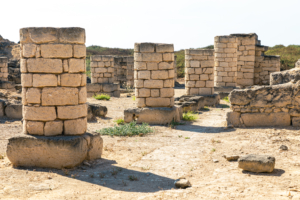
Conclusion
The Museum of the Frankincense Land Salalah stands as proof of Oman’s rich cultural heritage. Its detailed exhibits tell the fascinating story of how frankincense shaped global trade routes and connected civilizations on different continents.
Visitors can learn about Oman’s golden age of commerce through the museum’s focus on maritime excellence and historical artifacts. The archeological treasures from Al Baleed take us back to when this ancient port city was a vital link between East and West. Oman’s enduring connection to this precious commodity shines through in its carefully preserved frankincense traditions.
This cultural institution does more than preserve artifacts – it protects the story of a small trading port that grew into a powerful maritime hub. More secrets from Oman’s illustrious past await discovery, since archeologists have excavated nowhere near 10% of Al Baleed’s ruins. The site continues to yield new findings through ongoing archeological work.
History enthusiasts and curious travelers should experience this unique blend of maritime heritage, archeological wonders, and living traditions. The Museum of the Frankincense Land ended up becoming both a guardian of Oman’s past and a bridge to its future, keeping alive the legacy of one of history’s most precious commodities. Travel in style, travel with purpose start your adventure and Book Now!
